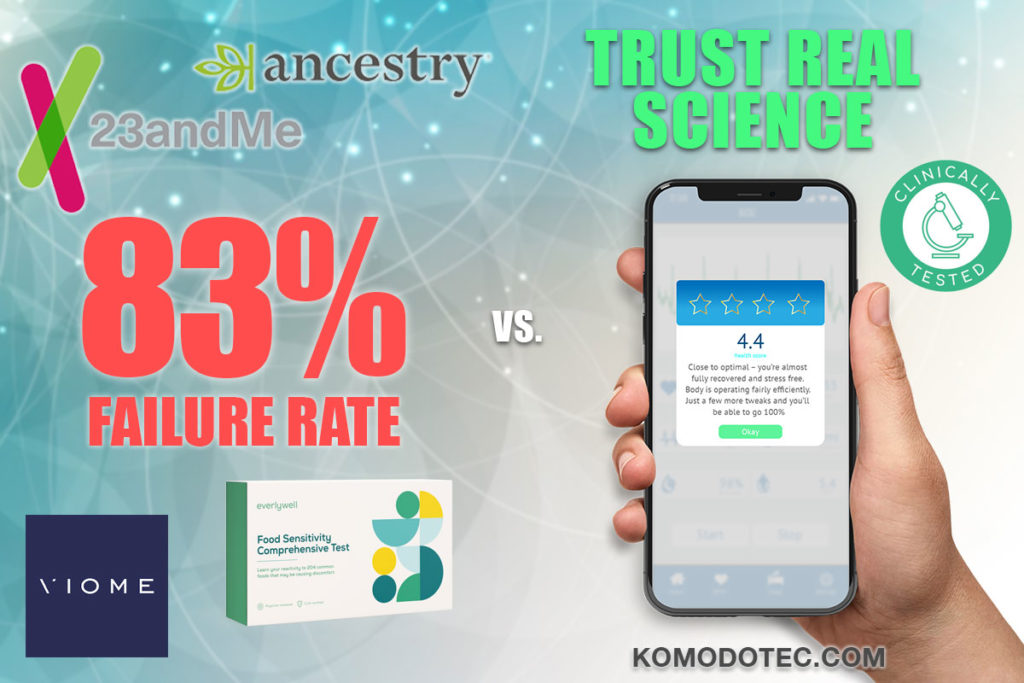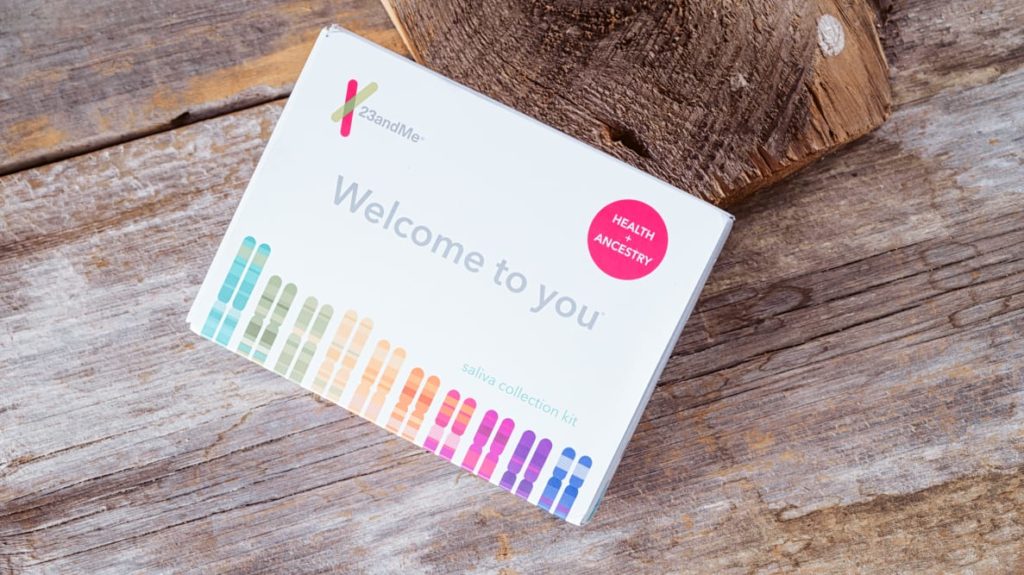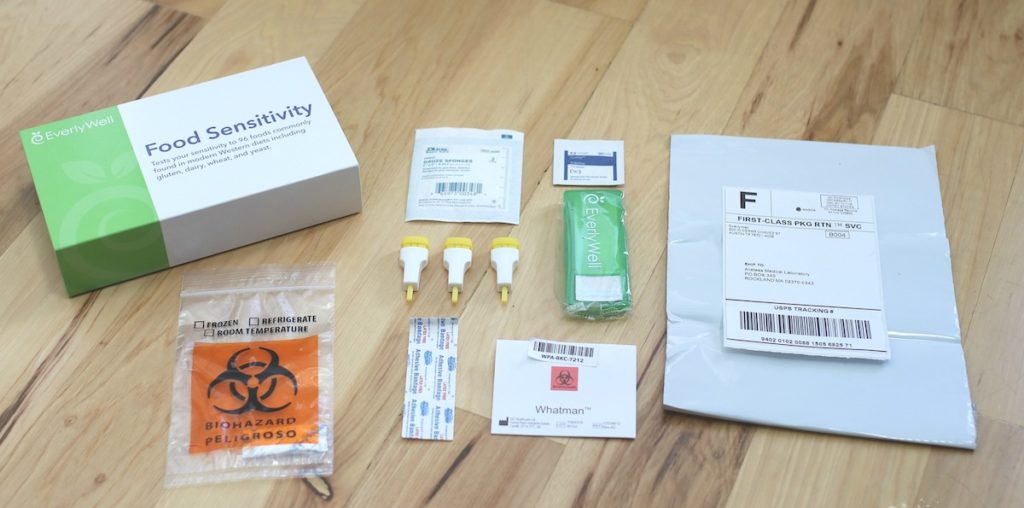[updated Jul, 2024]
The at home food sensitivity test has gained a ton of popularity over the last few years. Like with many trends, we had to make sure the “guinea pigs” test if first to make sure it’s safe. But now, they are selling these things at the local store / pharmacy. So, is it worth it?
Your internal health is an everchanging ecosystem that is affected by its environment and the things you introduce to that ecosystem. Lifestyle choices heavily influence how we feel and how smoothly everything internally is operating. From blood circulation, kidney and liver function, and inflammation. And out of all lifestyle choices, the food you eat has the greatest effect on your health.
So out of the things you CAN control, diet is the number one priority. For this reason, food sensitivity tests have become ever so popular. Everyone knows how bad fast food and Coca Cola are. But with food sensitivity testing, you can dig a lot deeper and gain insight into how your body reacts to certain food groups. It’s a tool that give us ultimate control of our health and destiny.
Just think about the metrics that clinics and health organizations use to grade the overall health in a society: obesity percentage, cholesterol, heart conditions, etc. Many of these metrics can be improved with diet optimization.
HOW DOES FOOD SENSITIVITY TESTING WORK?
Before asking yourself, which company has the best home food sensitivity test, it’s helpful to understand the different types and how they work.
Food sensitivity tests work by measuring your body’s response to various foods. They can detect the presence of antibodies and other biomarkers that indicate an immune response to specific food components. By identifying the foods that trigger your immune system, you can eliminate them from your diet and alleviate your symptoms.
DNA AT HOME FOOD INTOLERANCE TEST
This is the very basic version of food sensitivity testing. You simply submit the required samples needed for a DNA test. It could be blood, mouth or nasal swab, hair or stool. The first thing these companies (Ancestry.com and 23andMe) will do is conduct a DNA test internally. Once they have figured out your background, they will simply analyze the diet of your heritage and recommend which foods to avoid based on the pallet of certain regions.
This comes from broad, general data regarding diets of every region. So if your ancestry shows your part Italian, it will outline foods they generally ate, and ones that they tend to avoid (often times because it simply wasn’t available in the region)
While this might give you a general idea and maybe answer some lingering questions you might have, it’s not personal at all. And as we know, each individual is completely unique and diets need to be constructed with a personal approach.
FOOD REACTIVITY TEST | IMMUNOGLOBULIN G
The second type of food sensitivity deals with immunoglobulin G (or IgG). Immunoglobulin is an antibody, and there are many types. i.e., Immunoglobulin G, A, E and the list goes on. IgG, however, is most prevalent in the human body. What happens when you eat anything, Immunoglobulin G levels will rise and is part of the digestion process.
As for food sensitivity, you need to send it a small blood sample. In the lab, your blood is divided in up to 100 different samples. Then, properties from different food types are introduced into each sample. For one they’ll introduce dairy, carbs into another, and so forth. Then they will analyze the reaction of immunoglobulin G. Typically an over production indicates high food sensitivity.
This is generally considered the best home food sensitivity test among consumer products. Very important to treat it as a “consumer product”.
MICROBIOME TEST FOR FOOD SENSITIVITY
Another way to test for food intolerance is using a microbiome test. Your microbiome is essentially the ecosystem inside your body that houses bacteria, microbes, viruses, fungi, etc. According to a University of Washing paper: “The bacteria in the microbiome help digest our food, regulate our immune system, protect against other bacteria that cause disease, and produce vitamins including B vitamins B12, thiamine and riboflavin, and Vitamin K, which is needed for blood coagulation”.
Typically conducted via stool sample, microbiome tests analyze the different bacteria that live in your microbiome. This gives potential indication to what you might be susceptible to regarding harmful foods. However the literature from consumer products is sketchy with lots of industry lingo like artificial intelligence, not to mention the lack of scientific evidence or clinical validity.

HEART RATE VARIABILITY AND DIET
The final way to test uses cutting edge wearable technology. Some companies like WHOOP, KOMODO Technologies and Oura have a heart rate variability (HRV) feature in their products. HRV is a biomarker that gives us real-time data of stress responses from your body when you ingest food.
In technical terms, heart rate variability is measuring the time difference between each successive heartbeat. This is best done using an electrocardiogram (as opposed to some consumer devices that use an optical / BPM sensor).
HRV captures stress responses from your autonomic nervous system when you eat. Once you have established your baseline HRV (your average), you can track it in the coming hours after you eat. You’re waiting for the HRV to get back to baseline as fast as possible. The longer it takes, the tougher the digestion. You might want to consider cutting the foods that slow down that process. With heart rate variability, you are trying to eliminate the number of stressors harming your body. That could be food, alcohol, pills, and excessive exercise.
WHO’S DOIN’ WHAT
23ANDME FOOD SENSITIVITY TEST

23andMe started out doing DNA testing and moved its way towards food sensitivity testing. As discussed earlier, they use DNA and ancestorial history to recommend which foods you should eat and which foods to avoid.
The problem with this approach is that it’s least detailed. It’s not specific to you and just provides general data. To them, it’s simply about selling people another product. They are trying to create as many product lines from a DNA sample as they can.
Pros:
- 23andMe is a well-established company with a strong reputation in the genetic testing industry.
- The test is easy to use and can be completed at home.
- The results are detailed and provide information on a person’s genetic predisposition to lactose intolerance and celiac disease.
Cons:
- The test does not provide information on other food sensitivities.
- The results may not be relevant for individuals who do not have a family history of lactose intolerance or celiac disease.
- The test is relatively expensive compared to other at-home food sensitivity tests.
EVERLYWELL FOOD SENSITIVITY TEST DETAILS

Everlywell is a company that develops different types of at home health kits. For the food sensitivity test, they will need a blood sample via finger prick. Then they test your Immunoglobulin G response to up to 96 types of food.
The problem with this is that clinicians and doctors hate it. It’s not clinically proven because no one know exactly how much IgG creation constitutes high intolerance. You might say doctors hate it because it means less doctor visits and they lose money. There’s some truth there, but also a lack of research on the topic while these companies are raking in millions.
Pros:
- Everlywell is a well-established company that offers a range of at-home health testing kits.
- The test provides information on a wide range of food sensitivities.
- The results are easy to read and come with a personalized nutrition plan.
Cons:
- The test is more expensive than some other at-home food sensitivity tests.
- The results may not be as accurate as those obtained through laboratory testing.
VIOME MICROBIOME TEST

Viome is a company that has taken a new approach to food sensitivity testing and for that matter, overall gut health. However, microbiome testing has no proven efficacy.
The results of your microbiome test aren’t specific enough to be meaningful. And the big reason is that you cannot manipulate your microbiome into changing based on the food you eat. While other types of tests can show meaningful results to diet change, your microbiome lags. So even if you change your diet for the better, the contents of your microbiome won’t change.
Pros:
- Viome uses advanced technology to analyze the microbiome and provide personalized nutrition recommendations.
- The test provides information on a wide range of food sensitivities.
- The results come with a personalized nutrition plan.
Cons:
- The test is more expensive than some other at-home food sensitivity tests.
- The results may not be as accurate as those obtained through laboratory testing.
KOMODO’S AIO SMART SLEEVE

Heart rate variability (HRV) is one of the lesser-known methods of testing food sensitivity, but make no mistake, it’s one of the most accurate ones. HRV gives us a look into your autonomic nervous system (ANS). Digestion is part of the ANS and by measuring HRV, you get real-time data into how your body reacts to the foods you eat.
The AIO Smart Sleeve measure HRV using an electrocardiogram (ECG / EKG). It’s the most accurate method we have today to measure the true activity of your heart. The smart sleeve is equipped with a high-grade sensors that connects to any smartphone via bluetooth. You then record HRV for 2 minutes, input the food you ate and it will give you a score based out of 5 stars. Then in the history section you can monitor how each food affects your HRV. When considering factors like accuracy, cost and reliability, heart rate variability is the clear, best food sensitivity test on the market.
BEST AT HOME FOOD SENSITIVITY TEST
Considering heart rate variability has been studied for decades with over 10,000 studies proving its effectiveness, it is in fact the best way to test for food sensitivity.
How so? You might ask…
REAL-TIME DATA
You’re not going to be pricking your finger and sending I blood samples every day. But with an HRV monitor, you can do it EVERY DAY. Also, you’re getting better data from it than IgG or microbiome tests.
HRV simply gives you more data, and if you’re really interested, you will follow along and see how your body is reacting to food every day. You will start noticing trends. You’ll say “oh, I ate very late this day, the next day my HRV was low all day”, or “I’ve been eating the same salad for a few days and my energy is low, and so is my HRV.” It is priceless.
CAN’T FAKE IT
With heart rate variability, you are getting real results, un filtered, every single day. As opposed to sending your sample to a “lab” that takes 3-4 weeks to process. We have no idea what happens at these labs. Combine that with the fact that IgG and microbiome testing isn’t supported by majority of health professionals, it doesn’t make sense.
PRICE
This is kind of a no-brainer. Most food sensitivity tests are $150 and up, and that’s for one time. The AIO Smart Sleeve costs less than $150, comes with a free app and you can use it every day for years.
Are at-home food sensitivity tests accurate?
At-home food sensitivity tests are super convenient, but their accuracy can be a bit hit or miss. They usually measure antibodies like IgG to see how your body might react to different foods. Think of them as a good starting point rather than the final word. It’s always a smart move to chat with a healthcare pro to get the full picture and personalized advice.
What is the most accurate food intolerance test?
The gold standard for food intolerance tests involves lab-based testing supervised by healthcare experts. An elimination diet, where you remove and reintroduce foods to pinpoint the culprits, is highly effective. Blood tests that measure IgE antibodies for true allergies and IgG for sensitivities are also top contenders. Combining these methods with expert advice will give you the clearest results and the best plan to tackle your intolerances.
How to test yourself for food sensitivities?
Testing yourself for food sensitivities can be a bit of a detective game. Start with an elimination diet—cut out the usual suspects for a few weeks and then slowly bring them back while keeping an eye on how you feel. A detailed food diary is your trusty sidekick here. At-home IgG tests can add some clues, but remember, they’re not the whole story. Team up with a healthcare pro for the best results.
How do naturopaths test for food sensitivities?
Naturopaths bring a holistic twist to food sensitivity testing. They might use IgG antibody tests, elimination diets, and biofeedback techniques to get the scoop. Some even use muscle response testing (also known as applied kinesiology) to uncover sensitivities. The goal? To dig deep into what’s causing your symptoms and craft a personalized plan to boost your health.
Can a hair test detect food intolerance?
Hair tests for food intolerance? They sound cool, but they’re not as reliable as blood tests or elimination diets. Hair tests look at mineral deficiencies and toxins, which can hint at dietary issues but aren’t great at pinpointing specific food intolerances. For spot-on results, stick with blood tests and professional dietary evaluations.
Is food allergy testing covered by OHIP?
Good news, Ontarians! Food allergy testing is covered by OHIP when done by a qualified healthcare provider. This includes IgE-mediated allergy tests like skin prick tests and specific IgE blood tests. But heads up—tests for food sensitivities, like those IgG ones, usually aren’t covered. Double-check with your healthcare provider and OHIP to get the lowdown on what’s covered and any potential costs.
CONCLUSION
So, which of these is the best at home food sensitivity test? We’re not going to recommend a product, but when it comes to which method is best, the answer is clear. Heart rate variability gives you so much more than the other options. Not only can you use it for food sensitivity, but it has tons of other features as well. You can track workout recovery, daily stress levels, sleep quality, how medication affects you and more.
It doesn’t really matter which product you get. It could be Apple, Fitbit, WHOOP, OURA or AIO Smart Sleeve. They all have the feature, and each has their own unique way of presenting HRV data.

